
By MATT STEVENS and JASON M. BAILEY from NYT Business Day https://ift.tt/2vjb15l
Hindi news (हिंदी समाचार) website, watch live tv coverages, Latest Khabar, Breaking news in Hindi of India, World, Sports, business, film and web series, politics, modi, amit shah, rahul gandhi, sonia gandhi, education, transport, world news, Hollywood, Bollywood, tollywood. latest news, tech news, health, homemade remedies, benefits of fruits, new govt. vacancy, competition news, current affairs, history, Delhi News, Khabar, study material for competitive exam, lifestyle, love life,



 Punjab Freedom Fighters will hold a protest on Tuesday during the state-level function to mark Udham Singh’s death anniversary in Punjab’s Sunam. They are demanding action against officers who dubiously facilitated jobs to his seven distant relatives.
Punjab Freedom Fighters will hold a protest on Tuesday during the state-level function to mark Udham Singh’s death anniversary in Punjab’s Sunam. They are demanding action against officers who dubiously facilitated jobs to his seven distant relatives.
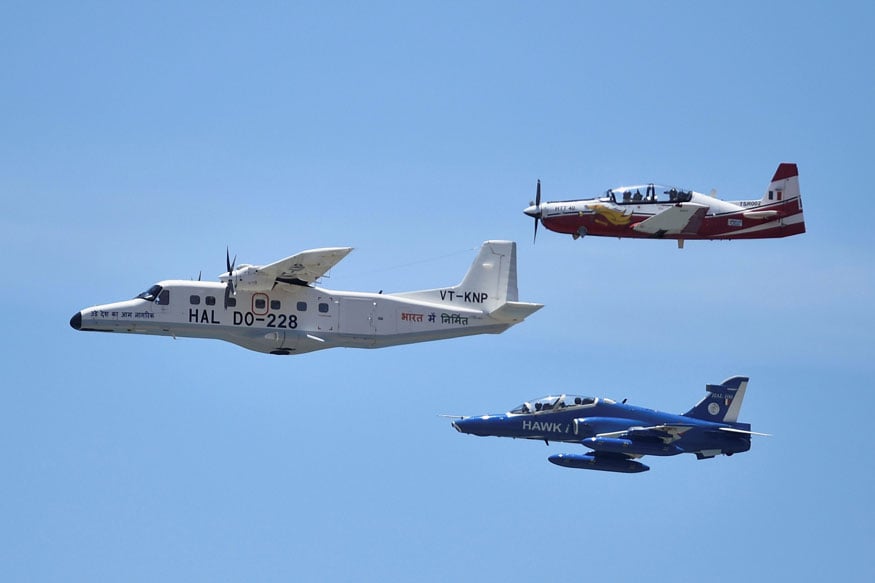 Currently there are 36 countries on STA-1 list. Other Asian countries designated as STA-1 are Japan and South Korea. Till recently India was designated as STA-2 countries along with seven others.
Currently there are 36 countries on STA-1 list. Other Asian countries designated as STA-1 are Japan and South Korea. Till recently India was designated as STA-2 countries along with seven others.
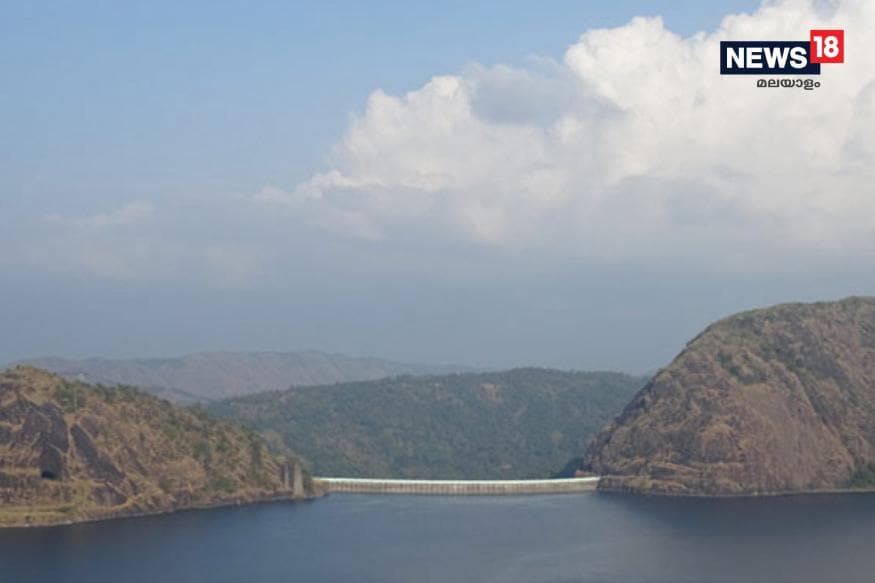 The Kerala State Disaster Management Authority (KSDMA) said an orange alert does not mean that shutter operations would be done anytime now.
The Kerala State Disaster Management Authority (KSDMA) said an orange alert does not mean that shutter operations would be done anytime now.
 Get a fresh dose of the news that matters, delivered directly to your inbox, every morning. The perfect way, to get you started and informed, for the day ahead.
Get a fresh dose of the news that matters, delivered directly to your inbox, every morning. The perfect way, to get you started and informed, for the day ahead.
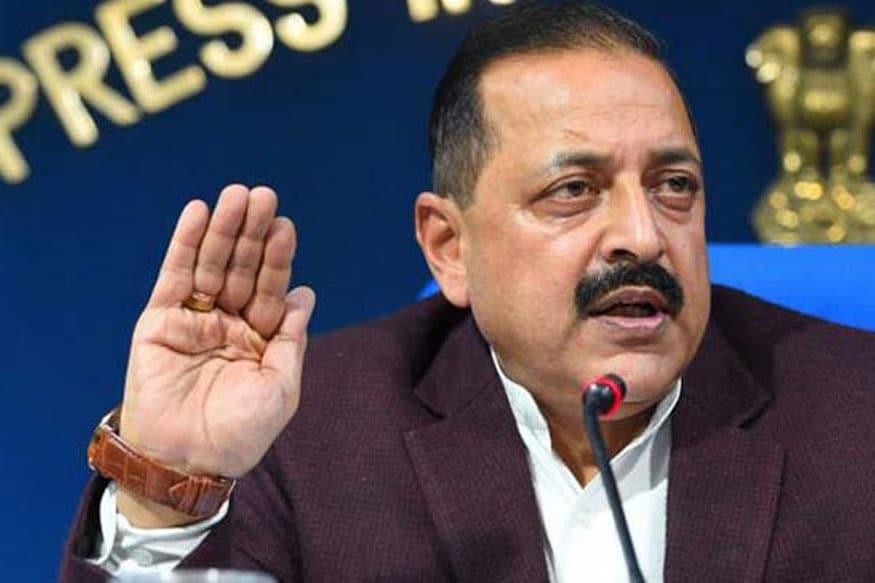 Department of Personnel and Training (DoPT) officials said that one lakh applications were expected. However, the department only received over 6,000 applications for lateral entry into Centrally sponsored IAS-level jobs.
Department of Personnel and Training (DoPT) officials said that one lakh applications were expected. However, the department only received over 6,000 applications for lateral entry into Centrally sponsored IAS-level jobs.
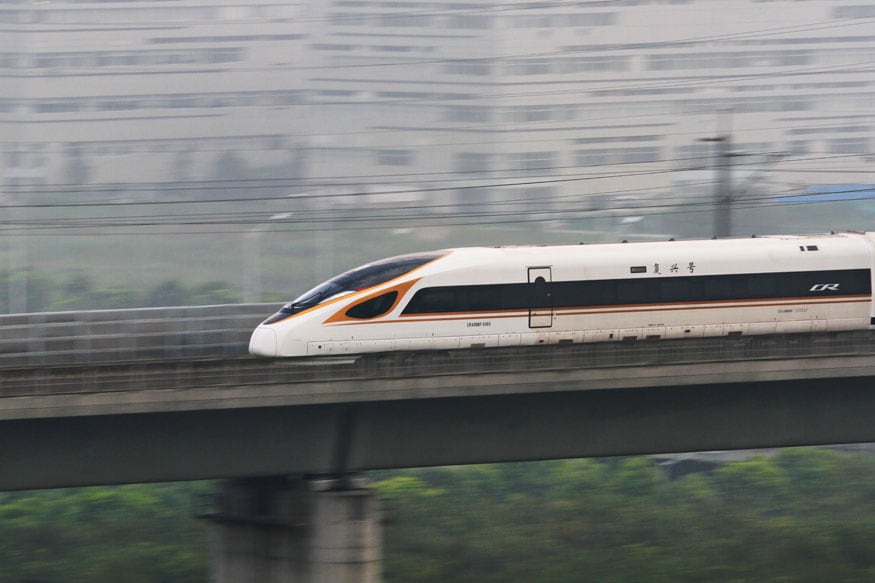 Railways is gearing up to acquire 25 E5 series bullet trains from Japan at an estimated cost of about Rs 5,000 crore.
Railways is gearing up to acquire 25 E5 series bullet trains from Japan at an estimated cost of about Rs 5,000 crore.
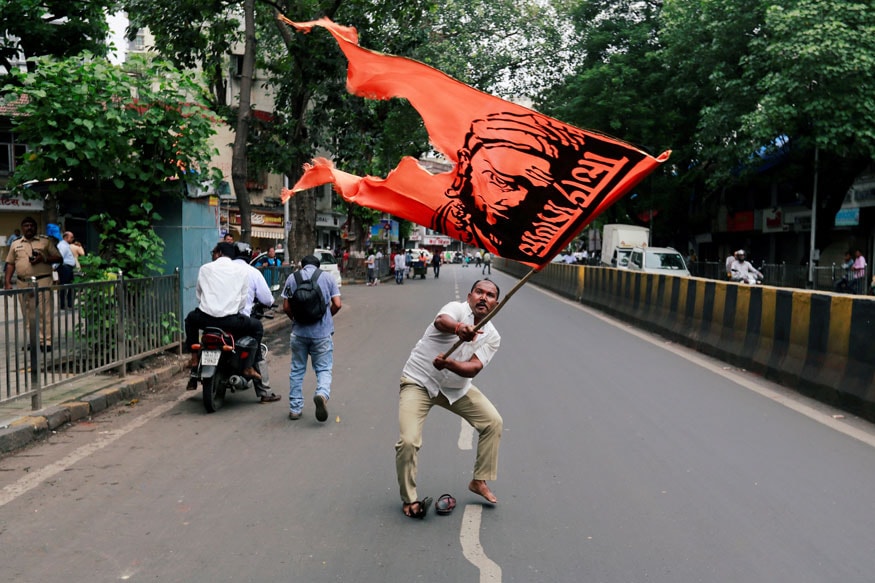 Police suspect that some miscreants from the adjoining areas and districts could have joined the peaceful Maharashtra Quota Agitation to disrupt them.
Police suspect that some miscreants from the adjoining areas and districts could have joined the peaceful Maharashtra Quota Agitation to disrupt them.
 Home Minister Rajnath Singh asserted that no "coercive" action will be taken against those whose names were excluded from the National Register of Citizens (NRC) draft list and ample time will be given to people to raise objections.
Home Minister Rajnath Singh asserted that no "coercive" action will be taken against those whose names were excluded from the National Register of Citizens (NRC) draft list and ample time will be given to people to raise objections.
 In the first case, the Sangh feared that Indira Gandhi would “never allow the RSS to officially reform” and in the ’14 general polls RSS put its weight behind Modi-led BJP “alarmed by the prospect of the Congress government imposing restrictions on their activities due to charges of Hindu terrorism”.
In the first case, the Sangh feared that Indira Gandhi would “never allow the RSS to officially reform” and in the ’14 general polls RSS put its weight behind Modi-led BJP “alarmed by the prospect of the Congress government imposing restrictions on their activities due to charges of Hindu terrorism”.
 The robbery took place at a distance of about a couple of kilometres from the official residence of Chief Minister Yogi Adityanath and the state Assembly.
The robbery took place at a distance of about a couple of kilometres from the official residence of Chief Minister Yogi Adityanath and the state Assembly.
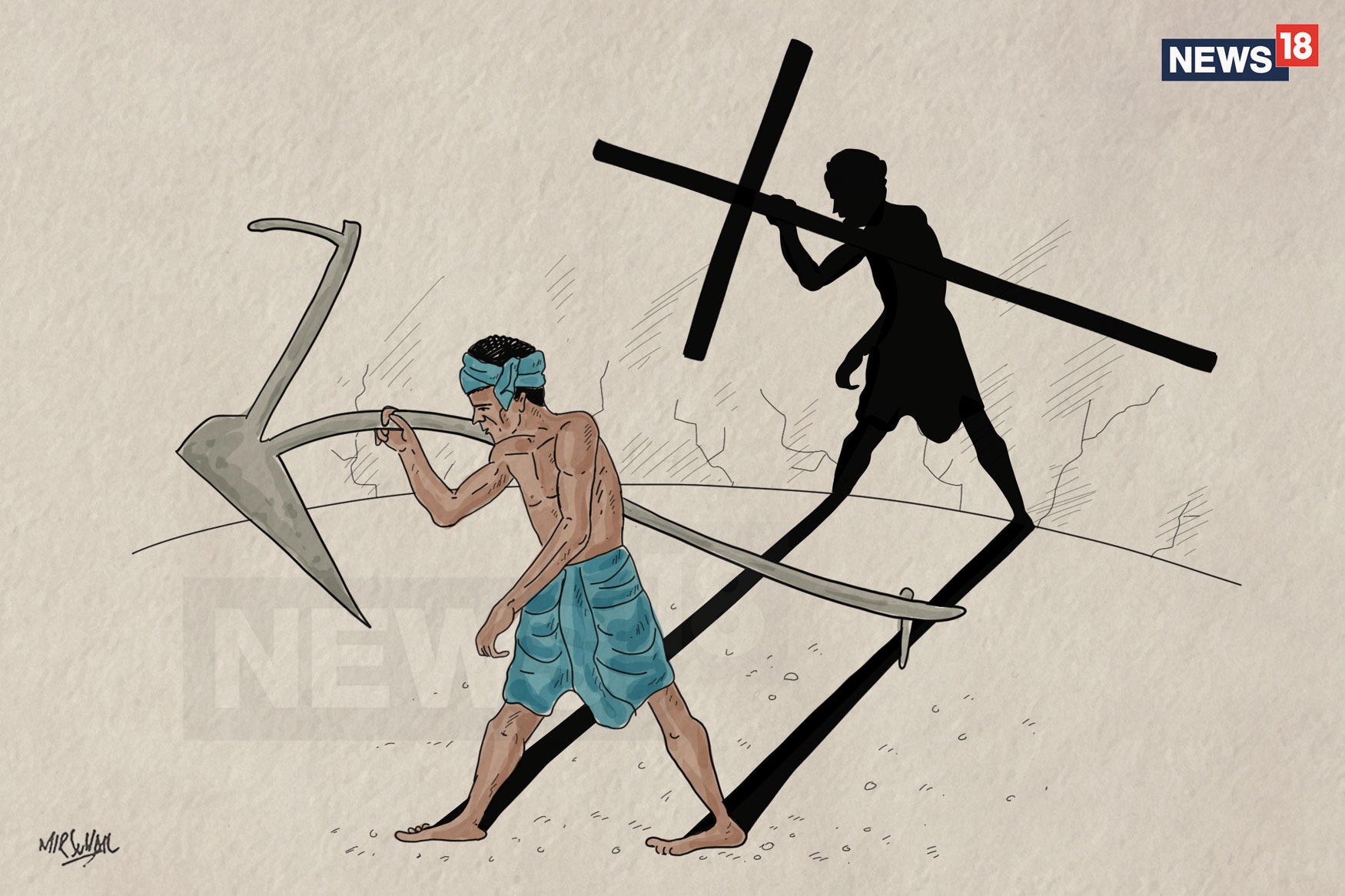 The farmer went to his farm and subsequently consumed poison and set himself ablaze after building his own pyre with woods and animal fodder.
The farmer went to his farm and subsequently consumed poison and set himself ablaze after building his own pyre with woods and animal fodder.
 While leaders of parties in Tamil Nadu and trade body representatives visited the hospital, DMK workers continued to swarm the hospital premises at upscale Alwarpet here.
While leaders of parties in Tamil Nadu and trade body representatives visited the hospital, DMK workers continued to swarm the hospital premises at upscale Alwarpet here.
 Data analysed over the years show US Citizenship and Immigration Service (USCIS) adjudicators deny more applications and issue a higher rate of Requests for Evidence for Indians on both H-1B and L-1 petitions, the report said.
Data analysed over the years show US Citizenship and Immigration Service (USCIS) adjudicators deny more applications and issue a higher rate of Requests for Evidence for Indians on both H-1B and L-1 petitions, the report said.
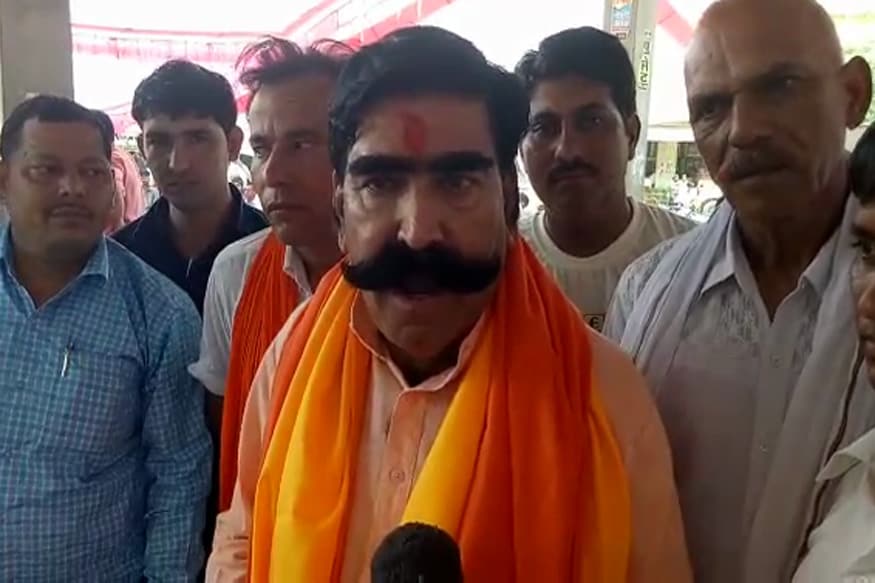 While it was alleged by his rivals that the people involved in the Rakbar case were his men, Ahuja had blamed the local police for the incident and had demanded a judicial inquiry or a CBI probe into the case to ensure unbiased investigation.
While it was alleged by his rivals that the people involved in the Rakbar case were his men, Ahuja had blamed the local police for the incident and had demanded a judicial inquiry or a CBI probe into the case to ensure unbiased investigation.
 Prime Minister Narendra Modi congratulated Khan for his victory in the recently conducted elections, in which his PTI emerged as the single largest party.
Prime Minister Narendra Modi congratulated Khan for his victory in the recently conducted elections, in which his PTI emerged as the single largest party.
 "The proposed bill will be on the lines of a legislation seeking death penalty to those convicted of raping girls below the age of 12 years," Hansraj Ahir told a delegation of the Nathjogi community who called on him in Yavatmal.
"The proposed bill will be on the lines of a legislation seeking death penalty to those convicted of raping girls below the age of 12 years," Hansraj Ahir told a delegation of the Nathjogi community who called on him in Yavatmal.
 Under the new framework, a violator can be penalised up to Rs 1 crore for significant breach and up to Rs 25 lakh penalty in all other cases where no separate penalty has been provided.
Under the new framework, a violator can be penalised up to Rs 1 crore for significant breach and up to Rs 25 lakh penalty in all other cases where no separate penalty has been provided.
 According to the bill, in case of rape of a girl under 16 years, the minimum punishment has been increased from 10 to 20 years, extendable to imprisonment for rest of life, which means jail term till the convict's "natural life".
According to the bill, in case of rape of a girl under 16 years, the minimum punishment has been increased from 10 to 20 years, extendable to imprisonment for rest of life, which means jail term till the convict's "natural life".
Saddlebags, side cases, panniers, bags. Whatever you call them, having luggage options for your motorcycle opens up a whole new world of uses for your motorcycle, like cross-country touring or grocery getting. We prefer the former. There are generally two perspectives when considering motorcycle luggage: hard or soft. Our opinion? It depends on the circumstance and your preference. Each has pros and cons. So, we put together a motorcycle saddlebags buyer’s guide to take a look at a few options from each side of the fence, but first, let’s consider some pros and cons.
Soft luggage generally costs less, weighs less, can be used interchangeably with many motorcycles or rack systems, and isn’t likely to get damaged, like a hard case, from a tip over. Conversely, soft luggage doesn’t offer the same security that a hard locking case has, can be more heavily damaged in certain crash scenarios, and doesn’t offer as convenient of access, as opening a latch, since they tend to have multiple straps and/or roll tops to be weatherproof.
To touch back on some of the points previously mentioned, hard cases offer better security as they are generally made out of metal or plastic or a combination of the two. Also, they can lock to your motorcycle and be locked shut. Mounting hard luggage also can help with stability as the cases are less likely to move around at speed. Hard luggage can provide better crash resistance in certain circumstances, but it really just depends on how it all goes down… literally.
Giant Loop is well known for its robust soft luggage and perhaps best known for its versatile rackless motorcycle luggage which is horseshoe-shaped, allowing it to be thrown over your back seat or rear rack and tied down to the motorcycle. The Siskiyou Panniers are a more traditional take on Giant Loop’s rackless luggage system. The Siskiyou is mounted over the rear seat and is adjustable in width to accommodate girthier motorcycles while still allowing the use of the rear seat for passengers, though a seat pad of some sort is recommended to keep your pillion happy. Each side holds 35 liters of storage, is made out of ballistic nylon, has a drawstring pocket which can be used for a 2-liter gas bottle, and has multiple lashing points to attach other pieces of luggage in a modular fashion. As with all Giant Loop products, the Siskiyou Panniers are made in the USA and carry a lifetime limited warranty.
Giant Loop Siskiyou Panniers $699.99 Learn more here.
Kriega’s Quadlock harness system has been a game changer when it comes to motorcycling backpacks, and the company has since expanded from rider packs to modular tail bag systems and, now, to soft luggage. Kriega’s products are made out of rugged materials that stand the test of time, even if you are unfortunate enough to have a get off. Ask me how I know.
The OS-32 carries on Kriega’s durable waterproof construction with its roll-top closure and materials such as Hypalon+1000D Cordura, Kevlar, and alloy buckles, which should hold up just fine even if you topple over on your big ADV bike. Capacity on each of the OS-32 panniers is, you guessed it, 32 liters and comes with a semi-structured box shape for easy loading. Touching back on the modular design of Kriega’s previous packs, the OS-32 has 16 “hook points” that work with the company’s other pieces of luggage such as the various sized dry packs for more storage. The Kriega OS-32 can be used with OS-Straps, which connect the two panniers over the rear of the motorcycle, or they can be attached to the OS-Platform which then connects to a luggage rack of your choice.
Kriega OS-32 Soft Pannier $295.00 (per pannier) Learn more here.
Mosko Moto was named after the Mosquito Coast (Mos(quito)ko(ast)) region of Eastern Honduras and Nicaragua where company co-founder, Pete Day, had the unfortunate luck of crashing his motorcycle, breaking his leg, and putting a premature halt to his travels. Pete had been experimenting with ways to make the PVC luggage he had been using work better and more efficiently. While mending and working on luggage concepts, Pete was introduced to Andrew Bryden who was, at the time, the lead bag designer for DaKine. Pete and Andrew hatched the idea for Mosko Moto shortly after. The two worked on prototypes over the course of a year and set back out to the Mosquito Coast to retrieve Pete’s abandoned motorcycle and ride it out to Panama.
The Backcountry 35L pannier kit is Mosko’s flagship model. Outside, the bags are comprised of Ballistic Nylon, 22-ounce PVC, and ripstop material with powder coated steel rotary draw attachment latches. Inside, the bags also use a 22-ounce PVC removable interior liner to guarantee waterproofness. Dismounting the bags is easy and quick with a wedge-type mounting system to the glass-filled nylon mounting plates. These plates connect to many other brands of racks, but the company includes a fitment page for peace-of-mind. The bags cinch down with 4 compression straps and front and bottom MOLLE panels allow for strapping on whatever extra accessories you might want. Relatively new to the market in 2014, Mosko Moto has made waves in the adventure luggage industry.
Mosko Moto Backcountry 35L Pannier $699.99 Learn more here.
Since we’re on the cusp of ending touring month and heading into adventure month full throttle here at MO, I wanted to include something a little different with SW Motech’s Legend Gear MOLLE lineup. Available in two sizes, 9.8L and 13.5L, the Legend Gear MOLLE style saddlebags are made for riders with style in mind. These bags are made from wax coated canvas and synthetic leather and can be used at various heights and on various bikes thanks to the versatile over-the-seat MOLLE design. Each bag is sold separately as is the SLS mounting strap.
SW Motech Legend Gear MOLLE LS2 $242.95 (per pannier) Learn more here.
Ah, Wolfman. My personal go-to. It’s the first and last soft motorcycle luggage I have bought. My personal drybags have been used on thousands of miles of motorcycle touring and camping all across the US and show little signs of use other than being dirty (mostly from my raw aluminum Touratech case rubbing against them).
Family owned and operated with its products made in the USA, Wolfman Motorcycle Luggage manufactures everything from tank bags to tail bags, with off-road and on-road offerings. The Rocky Mountain Saddle Bag was redesigned in 2018 to offer slightly more capacity and given a bit of a “U” shape to help carry and compress the load among other revisions. These bags are made out of 1680 denier custom vinyl-coated ballistic nylon with 22-ounce vinyl sides and use a 6-point mounting system with 1-inch metal cam buckles. Each bag holds 36 liters of storage and is lined with a polyurethane-coated nylon with sealed seams to keep water out. The liners are also bright yellow to help see items inside. There are D-rings found throughout to connect other accessories from Wolfman.
Wolfman Rocky Mountain Saddle Bag $524.99 Learn more here.
What can be said that wasn’t already stated in my feature-length review?
Dryspec – H35 $698.00 Learn more here.
GIVI is an Italian company that makes all types of hard and soft luggage for all types of motorcycles as well as accessories like engine guards, hand protectors, radiator guards, and more. The GIVI Trekker series was first introduced when adventure bikes started to become popular and was designed to cater to those customers. GIVI has since released its Outback and Dolomiti line which have an even more robust full metal construction, whereas the Trekker is mostly plastic with aluminum veneers. The GIVI Trekker is available in two sizes and two colors: 33L and 46L and aluminum or black. The Trekker series cases are lockable both to the motorcycle as well as the case itself. These cases also offer a partial lid opening system with a smaller lid available to be accessed from the top to grab or stow small items quickly and conveniently.
GIVI Trekker Series $679.00-750.00 Learn more here.
Al Jesse began making robust, rugged adventure luggage by hand in the mid-80s out of his California home. Jesse’s idea for a more robust luggage system first began to simmer while following the Paris-Dakar route in 1985 onboard a BMW R80ST he had purchased in London. Once home, Jesse began making and selling these cases by order and eventually grew the business and moved to Arizona where the company remains today.
The Jesse Luggage Odyssey panniers are constructed of 2mm thick 5052 aluminum with angled corners not only for added durability, but also for clearance should a rider find themselves paddling with their legs through difficult terrain. The cases are powder coated for a durable finish while also helping to keep aluminum dust off of your belongings (a real problem with raw aluminum cases). The friction hinge on the cases also allow you to place and leave the lid wherever you like while loading/unloading. The single-hand latches are said to be incredibly easy to use.
Jesse Luggage Odyssey II $995.00 Learn more here.
Not all OEM luggage is created equal, but most of it is easy to mount. Some bikes are even being produced with the luggage mounts built into the bike’s design, which makes it even easier to buy the cases and slap ‘em right on. No muss, no fuss.
What would a luggage buyer’s guide be without Touratech’s Zega Pro aluminum panniers? I’ve owned the Zega Pro top case (which is the same basic design and structure as the side cases) for the entire time I’ve owned my KTM 1190 Adventure R, racking up more than 34,000 miles of use with that thing, including one somewhat high-speed spill on road, which left it scarred but totally intact.
The Zega Pro side cases can be had in bare aluminum (don’t do it), anodized silver, and black. Bare aluminum will leave all of your belongings or luggage that comes into contact with it, smudged with aluminum dust forever (basically). It never goes away. Two sizes are available, 31/38L or 38/45L. The Touratech cases are different sizes to accommodate high-mounted exhausts. The Zega Pros are durable, waterproof, easy to remove, can be locked closed, and locked to the motorcycle, as long as you purchase the locking kits which don’t come with them. For $1349.00, I think they should come with locks, but that’s just me. Construction is very solid and despite the premium price, I would still definitely recommend them.
Touratech Zega Pro panniers $1349.00 Learn more here.
The post Motorcycle Saddlebags Buyer’s Guide appeared first on Motorcycle.com.

For a company like Harley-Davidson, change can be slow and incremental. Not so today, as Harley-Davidson announced a new plan for growth from now through 2020, including some significant, bold changes that many customers have long been asking for.
There’s the new liquid-cooled modular platform in four displacements from 500cc to 1250cc, led by the company’s first adventure bike, the 2020 Harley-Davidson Pan America 1250, which we posted earlier today. Harley-Davidson says this new middleweight platform will span three distinct product spaces. In addition to the Pan America, Harley showed off prototypes of a 975cc streetfighter and a custom model.
These three models are just the tip of the iceberg. Harley-Davidson says it will launch a second adventure-touring model using the 975cc version of the engine by 2021. The as-yet-unnamed streetfighter model will be the first of nine standard models. These will arrive from 2020-2022 and carry engines displacing from 500cc to 1250cc.
The custom model will be one of five bikes displacing between 500cc to 1250cc that are tentatively set to launch in 2021 and 2022. Harley-Davidson didn’t say anything specific, but it’s possible these five models may be a full replacement of the Sportster line.
The new adventure-touring and streetfighter/standard models are a recognition of the strong demand these segments have in Europe, and will be a key element of Harley-Davidson’s plans to grow overseas. Harley-Davidson estimates this segment accounts for sales of 273,000 in 2017 model sales in Europe, none of which currently bear the bar and shield.
There’s also the LiveWire, the first in a new line of electric Harley-Davidson models, set to launch in August 2019. The electric motorcycle market is still relatively dormant, and Harley-Davidson says it plans to take a leadership role, especially from a design perspective starting with the LiveWire. Electric motorcycles are currently priced significantly higher than similar performing internal combustion models, but Harley-Davidson predicts the market will reach cost parity as early as 2030.
The LiveWire will be followed by two more electric models in 2021-2022 that Harley says will offer accessible power and pricing. Harley-Davidson will also offer a selection of what it calls “lightweight urban” electric models in 2021 and 2022. According to Harley-Davidson, these lightweight urban bikes currently make up the bulk of worldwide electric motorcycle sales (including 38 million units in Asia and another 1.8 million in North America and Europe).
Harley-Davidson also announced plans to partner with an Asian motorcycle manufacturer to develop small-displacement models from 250cc to 500cc within the next two years. These will be produced in large quantities for the Asian market, and Indian in particular. The small-displacement models will help increase Harley-Davidson’s brand in Asia while acting as a bridge to its larger-displacement models.
From the business side of things, Harley-Davidson says it will try to broaden access to customers by expanding its website to “integrate and enhance the dealership retail experience” and forming alliances with online retailers. Harley-Davidson expects online or digitally-influenced sales will account for 99% of customer retail growth over the next five years.
Harley-Davidson also plans to open up to 125 new, smaller storefronts in urban locations by 2022 to increase sales of apparel and other products. This will include a mix of permanent and pop-up retail locations.
Traditional dealerships will still play an important role, and Harley-Davidson says it will implement a new performance framework to strengthen its dealer network. Harley also plans to open 25-35 new dealerships in international markets (primarily in emerging markets) by 2022.
Harley-Davidson says its accelerated strategy will require the allocation of $450-550 million towards operating investment and $225-275 million in capital investment through 2022. These will be funded entirely through the reallocation of previously planned resources and comprehensive cost reduction.
If all goes well, Harley-Davidson forecasts annual revenues to grow $1 billion by 2022.
“The bold actions we are announcing today leverage Harley-Davidson’s vast capabilities and competitive firepower – our excellence in product development and manufacturing, the global appeal of the brand and of course, our great dealer network,” says Matt Levatich, president and chief executive officer of Harley-Davidson. “Alongside our existing loyal riders, we will lead the next revolution of two-wheeled freedom to inspire future riders who have yet to even think about the thrill of riding.”
Invoking the “i” word, Levatich goes on to say, “Harley-Davidson is iconic because we’ve never been static. In moving forward, we are tapping into the spirit that drove our founders back in 1903 and every one of the employees and dealers who rose to the challenges faced along the way. Our plan will redefine existing boundaries of our brand – reaching more customers in a way that reinforces all we stand for as a brand and as a company and we can’t wait to kick it into gear.”
The post Harley-Davidson Announces Growth Plan Through 2022 appeared first on Motorcycle.com.

The season may be winding down, but the racing action is certainly heating up. Washougal is just one of those tracks; incredibly beautiful with awesome natural features built into the landscape which goes in and out of the Pacific Northwest’s giant trees – a bucket list track for any motocrosser. Eli Tomac charged to yet another 1-1 sweep to take the overall. The man was simply on a mission. Ken Roczen continues to kick ass despite his return from injury, and Marvin Musquin showed a lot of speed, but just not enough. Justin Bogle keeps ripping holeshots, but can’t seem to hold on for very long afterwards and ultimately drifts back into the pack.
The 250 class is a bunch of maniacs. These guys are the future stars and holy cow are they going fast. The 250 motos at Washougal were jumbled up a bit with Plessinger finishing 4-3 for first overall, Savatgy went 9-1 for second, and McElrath 1-9 for third. It was all over the place, but it was incredibly entertaining racing.
Pro Motocross:
WASHOUGAL, WA – July 29, 2018 – The Lucas Oil Pro Motocross Championship, sanctioned by AMA Pro Racing, made its lone visit to the Pacific Northwest for the ninth round of the 2018 season, with the 38th running of the Motosport.com Washougal National from Washougal MX Park. In the 450 Class, Monster Energy Kawasaki’s Eli Tomac put forth another impressive ride to sweep the motos and grab back-to-back victories. In the 250 Class, a wild afternoon of racing saw consistency help Monster Energy/Yamalube/Star/Yamaha’s Aaron Plessinger emerge with his third straight win to open a commanding lead in the championship.
The first 450 Class moto got underway with Autotrader/Yoshimura/Suzuki Factory Racing’s Justin Bogle grabbing the Motosport.com Holeshot over his teammate Justin Hill. Behind them the Monster Energy Kawasaki tandem of Josh Grant and Eli Tomac battled for third, with Tomac taking the position. Hill immediately pressured Bogle for the lead while Tomac gave chase, while Team Red Bull KTM Factory Racing’s Marvin Musquin moved into fourth.
Bogle was able to withstand the early threat from his teammate, which allowed Tomac to make the pass for second. Hill was then forced to deal with Musquin in a battle for third. It didn’t take long for Musquin to break into podium position and drop Hill to fourth. Out front, Tomac’s relentless pursuit of the lead paid off as he passed Bogle for the top spot and proceeded to quickly open a gap. A short time later Musquin found his way around Bogle for second. With a clear track Tomac was able to pull out to a three-second lead after just one lap.
With the lead duo distancing themselves from the field, the battle for third intensified. Hill was finally able to get by Bogle to take over third, and soon after that Team Honda HRC’s Ken Roczen moved into fourth. Hill briefly held off the former champ for the final podium spot, but Roczen worked his way around to seize control of third.
Tomac was in a class of his own out front and continued to build on his lead throughout the remainder of the moto. He took the checkered flag 11.6 seconds over Musquin, who went unchallenged for second. Roczen rode to an uneventful third-place finish, while Hill equaled his career-best result in fourth. Monster Energy/Yamaha Factory Racing’s Justin Barcia overcame a tip over on the opening lap to make a late pass for fifth.
The final 450 Class moto saw Bogle sweep Motosport.com Holeshots, but he was soon overtaken by Roczen, who wasted little time in sprinting to a lead. Hill got another strong start in third, followed by RMATV/MC-WPS-KTM’s Blake Baggett and Musquin. Tomac started deep inside the top 10. The field jockeyed for position throughout the opening laps, with Hill getting around Bogle for second and Musquin around Baggett for fourth. The Frenchman then chased down and passed Bogle for third.
Roczen sat more than two seconds ahead of the field after the first full lap of the moto, and continued to push the pace in hopes of building a lead he could manage for the long haul. Behind him Tomac was picking up the pace as well and moved up from eighth to fifth. In an effort to catch Roczen, Musquin engaged in a heated battle with Hill for second and their back-and-forth worked to the benefit of Roczen, who moved out to an advantage of more than three seconds once Musquin finally got by Hill for second. Not long after that Tomac gained another spot as well, getting aggressive with Barcia to take over fourth. All this action took place within the first 10 minutes of the 30-minute-plus-two-laps moto.
Drama unfolded just before the halfway point of the moto as Hill crashed out of third, giving the spot to Tomac. However, Tomac went down a short time later as he looked to track down Musquin. The point leader gave up third to Barcia, but remounted quickly in front of Baggett to hold on to fourth. Tomac then went back to work to try and catch Barcia. He successfully did so and retook the position with 13 minutes to go. The pass put Tomac into a tie with Roczen for first in the overall classification, but the second moto tiebreaker weighed in the German’s favor. Tomac would need to erase an 11-second deficit on Musquin in order to take sole possession of first.
Roczen did what he had to do out front and continued to lay down the fastest laps on the track to build on his advantage over Musquin, but Tomac was on a mission in third. He posted the fastest times of the moto over back-to-back laps to take massive chunks out of Musquin’s advantage. His pace was multiple seconds faster than both riders ahead of him and soon enough Musquin was in his sights. Tomac wasted little time in applying pressure on his rival, but Musquin put up an impressive fight to hold him off. It was only a matter of time, however, and with four minutes to go Tomac took over second, and with it the overall win. However, he wasn’t finished.
With three laps to go less than two seconds separated Roczen and Tomac, and the defending champion made an attempt for the lead with a dive bomb down the track’s big hill. Roczen held him at bay, but just briefly. Tomac surged past Roczen as they took the two-lap board and immediately pulled away. He carried on to sweep the motos by 2.2 seconds over Roczen. Musquin followed in third.
It was the fifth 1-1 sweep of the season for Tomac and his seventh win of the summer. He now has 16 career wins and has won two of the last three years at Washougal. Roczen finished second overall (3-2) earning the tiebreaker of Musquin (2-3) following their identical moto scores.
“That was unbelievable. After the fall I thought maybe I could get to second, but I didn’t think I’d get the win. To make it happen is kind of crazy,” said Tomac. “Once I got going [after falling] I really had a great pace. I found some lines and just started cranking. The track allowed you to be aggressive, but you still had to toe the line, so it was importance to have that balance. This feels awesome.”
Tomac has moved out to a 15-point lead over Musquin in the 450 Class standings with three rounds remaining. Roczen moved into a tie with Barcia, who finished fourth, for third. They sit 71 points behind Tomac.
The opening 250 Class moto saw Monster Energy/Pro Circuit/Kawasaki teammates Joey Savatgy and Austin Forkner grab the early advantage, with Savatgy claiming the Motosport.com Holeshot. Behind them, Troy Lee Designs/Red Bull/KTM’s Jordon Smith slotted into third, while Plessinger started just outside the top five. After a torrid opening lap the field settled in, with Savatgy stabilizing a small gap on Forkner as Plessinger fought his way up to fourth and soon gave chase to Smith for third.
The top four started to distance themselves from the rest of the field and sat within two seconds of one another for several laps. Savatgy was able to open a gap, but Forkner fought back and was able to make an aggressive pass for the lead with just under 17 minutes remaining in the 30-minutes-plus-two-laps moto. The gap between the lead group ebbed and flowed, but Forkner upped his pace to stabilize a lead of just over a second on Savatgy.
With less than five minutes remaining the teammates found themselves within a bike length of one another as Savatgy mounted a late challenge. The Kawasaki duo was able to pull away from Smith, which set the stage for a head-to-head battle for the win. With two minutes to go Savatgy made it happen with an aggressive pass of his own to reclaim the lead. Forkner didn’t let up and fought back, but Savatgy fended him off. As they continued to fight, Smith closed back in from third. A few small bobbles by Forkner gave Savatgy the advantage he needed to race to his first moto win of the season by 1.9 seconds. Smith was third, with Plessinger fourth and GEICO Honda’s Chase Sexton fifth.
The deciding 250 Class moto saw Plessinger emerge with the Motosport.com Holeshot over Troy Lee Designs/Red Bull/KTM’s Shane McElrath, who made a run around Plessinger to seize the lead. Forkner slotted in third while Savatgy was mired deep in the field in 25th after going down. Forkner’s day came to an end on the first lap when he crashed while running third and was forced out of the moto. That gave third place to Monster Energy/Yamalube/Star/Yamaha’s Dylan Ferrandis.
With a clear track McElrath was able to put the hammer down and sprint out to a lead of more than three seconds on Plessinger mere minutes into the moto. As the leaders settled into their positions all eyes turned to Savatgy, who was going all out in an effort to salvage a spot on the overall podium, if not the overall win. The Kawasaki rider made aggressive moves through the field and was on the verge of top 10 just past the halfway point of the moto.
McElrath successfully managed a lead of about five seconds over Plessinger, but the point leader made a costly mistake by going down and dropping a spot to third behind Ferrandis. That gave McElrath a commanding 12-second lead over the field that he would not give up. McElrath cruised to the first moto win of his career, crossing the line 12.7 seconds ahead of Ferrandis, with Plessinger third. Savatgy left it all on the track with a ninth-place finish.
When the overall results were tallied, Plessinger’s 4-3 finishes just barely clinched his third straight victory by a single point over McElrath (9-1) and Savatgy (1-9), who finished in a tie for second with the tiebreaker going to McElrath by virtue of his better result in the second moto.
It’s the fifth win of the season for Plessinger and the seventh victory of his career. He’s also the ninth different 250 Class winner in the last nine races at Washougal, dating back to 2009.
“I definitely did not know I won. I had luck on my side in that one,” said Plessinger. “Shane [McElrath] was riding awesome. I got the start, passed me, and pulled away form me. That was that. Then I crashed and got behind Ferrandis and couldn’t get back by. That’s what happens. These guys are riding so good and you can’t afford to make a mistake, but somehow everything worked out for us today.”
The win added 10 points to Plessinger’s lead in the 250 Class standings, which now stands at a comfortable 59 points over Troy Lee Designs/Red Bull/KTM’s Alex Martin, who finished sixth. More than a full race worth of points now sits between the top two with three rounds remaining.
The 2018 Lucas Oil Pro Motocross Championship will take its final break of the season before returning to action on Saturday, August 11, with its annual visit to famed Unadilla MX in upstate New York for the Massey Ferguson Unadilla National. First motos of the 10th round can be seen live on MAVTV at 10 a.m. PT / 1 p.m. ET. The second 450 Class moto will air live on NBC broadcast network at 12 p.m. PT / 3 p.m. ET, while the final 250 Class moto can be seen via tape delay on NBC Sports Network at 4:30 p.m. PT / 7:30 p.m. ET. Additionally, all of the action can be seen as it unfolds online via the “Pro Motocross Pass” on NBC Sports Gold.
Lucas Oil Pro Motocross Championship
Motosport.com Washougal National
Washougal MX Park – Washougal, Washington
July 28, 2018
For information about the Lucas Oil Pro Motocross Championship, please visit ProMotocross.com and be sure to follow all of the Pro Motocross social media channels for exclusive content and additional information on the latest news:
Facebook: @americanmotocross
Instagram: @promotocross
Twitter: @ProMotocross
YouTube: AmericanMotocross
Lucas Oil Pro Motocross Championship Results: Washougal 2018 appeared first on Motorcycle.com News.

Four years after introducing the prototype, Harley-Davidson is finally ready to go electric, announcing the impending launch of the LiveWire production model in August next year.
Harley-Davidson LiveWire Prototype First Ride
The electric 2020 Harley-Davidson LiveWire will be “the first in a broad, no-clutch “twist and go” portfolio of electric two-wheelers designed to establish the company as the leader in the electrification of the sport. LiveWire will be followed by additional models through 2022 to broaden the portfolio with lighter, smaller and even more accessible product options to inspire new riders with new ways to ride.”
More Roads to Harley-Davidson: Strategy for 2019-2022
It’s official, and the 2019 LiveWire looks like it’s ready to seriously ride, complete with full-size sport tires and big dual disc brakes up front. Other than that, however, important details, like range and $$$, remain unavailable…
Harley-Davidson also teased other electric models to be released further down the road. Unlike the LiveWire, these models will likely use technology developed by Alta Motors, which Harley-Davidson recently invested into. Based on trademark filings, we expect the electric powertrain will be known by the brand name “H-D Revelation.”
In the sketches above and in the video above, Harley-Davidson showed several designs for potential models including what looks like some sort of utility bike with a cargo area and a bicycle-style electric motorcycle.
The post Harley-Davidson LiveWire: August, 2019 appeared first on Motorcycle.com.